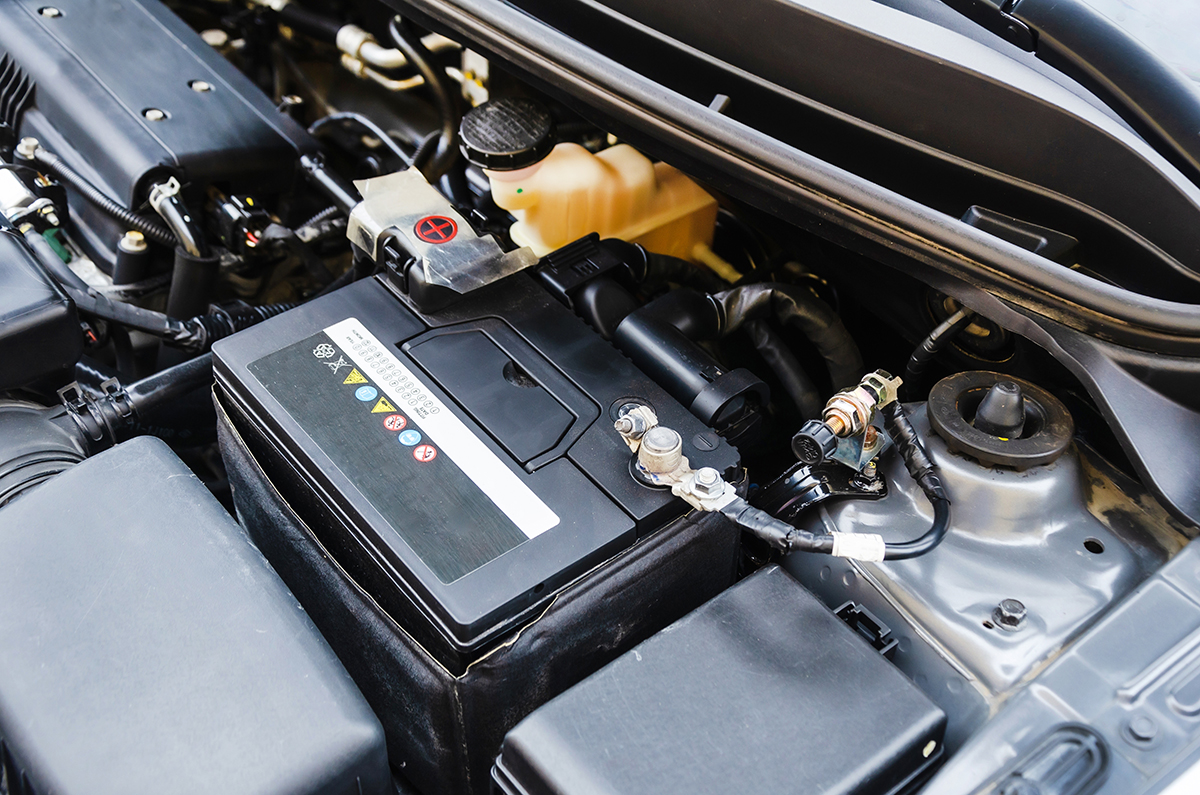How to Check, Maintain, and Replace a Car Battery

Your car battery is the heart of your vehicle's electrical system, providing the power necessary to start the engine and run various electronics. Regularly checking, maintaining, and replacing your car battery when necessary can prevent unexpected breakdowns and extend the life of your vehicle. To help, we've put together a handy guide on how to handle your car’s battery.
How to Check Your Car Battery
Perform a Visual Inspection
Pop the hood and take a look at your battery. Check for corrosion around the terminals, which can appear as a white, ashy substance. This buildup can hinder the battery's performance. Also, inspect the battery casing for any signs of cracks, bulging, or leaks – these are signs that your battery may be compromised and needs replacement.
Test the Battery Voltage
You can check your battery's health with a multimeter. A fully charged battery should measure around 12.6 volts or higher. If it reads between 12.4 and 12.6 volts, your battery is moderately charged. Anything below 12.4 volts might indicate your battery is starting to discharge and could need a recharge or replacement soon.
Use a Battery Tester
Many auto parts stores and mechanics use specialized battery testers that give more detailed information about the state of the battery. They can test the cold cranking amps (CCA) and provide an accurate status of whether your battery is nearing the end of its life. Pull into a convenient Metro Motor location to have your battery checked by a professional.
How to Maintain Your Car Battery
First, clean the battery terminals. Corroded terminals can cause issues with starting your car. Use a mixture of baking soda and water along with a wire brush to clean off any corrosion. Be sure to disconnect the battery before cleaning – remove the negative (black) cable first, followed by the positive (red) cable.
Then, check the water levels (for non-sealed batteries). Some older or non-sealed batteries have removable caps where you can check the water levels inside. Make sure the water (distilled water only) covers the battery plates but doesn’t overflow. Avoid using tap water, as it contains minerals that can damage the battery.
Tighten the connections. Loose battery connections can cause electrical problems and might prevent your car from starting. Ensure that the battery terminals are secure. If the cables are loose, tighten them carefully using the appropriate tools.
When you drive your car, the alternator recharges the battery. Regular driving helps maintain the battery’s charge and prevents it from draining too quickly. Frequent short trips or leaving your car idle for long periods can drain the battery. If you know you won’t be using your car for a while, consider disconnecting the battery or using a trickle charger to maintain its charge.
How to Know When to Replace Your Car Battery
When replacing your battery, it’s important to choose the correct type for your vehicle. Check your car’s owner’s manual or consult a qualified mechanic, like the ASE-certified technicians at Metro Motor, to ensure you get the right size, type, and capacity. But how do you know when it's time to make a swap? Common signs that your battery is failing include:
- Difficulty starting the car
- Dim headlights or interior lights
- A battery warning light on your dashboard
- Age: Most car batteries last between 3-5 years. If your battery is older than that, it’s likely time for a replacement.
How to Replace the Battery
Replacing a car battery is a routine vehicle maintenance task that can be completed by a professional auto repair shop or, with a bit of guidance and some foundational knowledge, can be handled by most drivers. Here are the steps to replace your car's battery:
- Turn Off the Vehicle – Make sure your car is off, and remove the keys from the ignition.
- Disconnect the Negative Cable – Using a wrench, loosen the nut on the negative terminal (usually marked with a minus sign or black cap) and remove the cable.
- Disconnect the Positive Cable – Similarly, loosen the nut on the positive terminal (marked with a plus sign or red cap) and remove the cable.
- Remove the Battery – Batteries are heavy, so be cautious when lifting. Remove any clamps or holding brackets and carefully lift the battery out of the tray.
- Clean the Battery Tray and Terminals – Before installing the new battery, clean any debris or corrosion from the tray and terminals.
- Install the New Battery – Place the new battery in the tray, secure it with clamps, and attach the positive cable first, followed by the negative cable.
- Tighten the Connections – Ensure both cables are securely fastened.
- Test the Battery – Start your car to ensure the battery is properly installed and working.
By regularly checking and maintaining your car battery, you can ensure it performs efficiently and avoid inconvenient breakdowns. Remember to replace your battery every 3-5 years or as soon as you notice signs of trouble. If you're uncomfortable with handling car batteries, head to Metro Motor! We can inspect, maintain, and replace the battery for you. Taking care of your battery means taking care of your car’s overall health.
Vehicle care information made available by Metro Motor is presented as helpful advice for general maintenance and should not be construed as instructions for at-home vehicle service. Be sure to consult your owner’s manual and a licensed, professional mechanic for diagnostics and repair.
